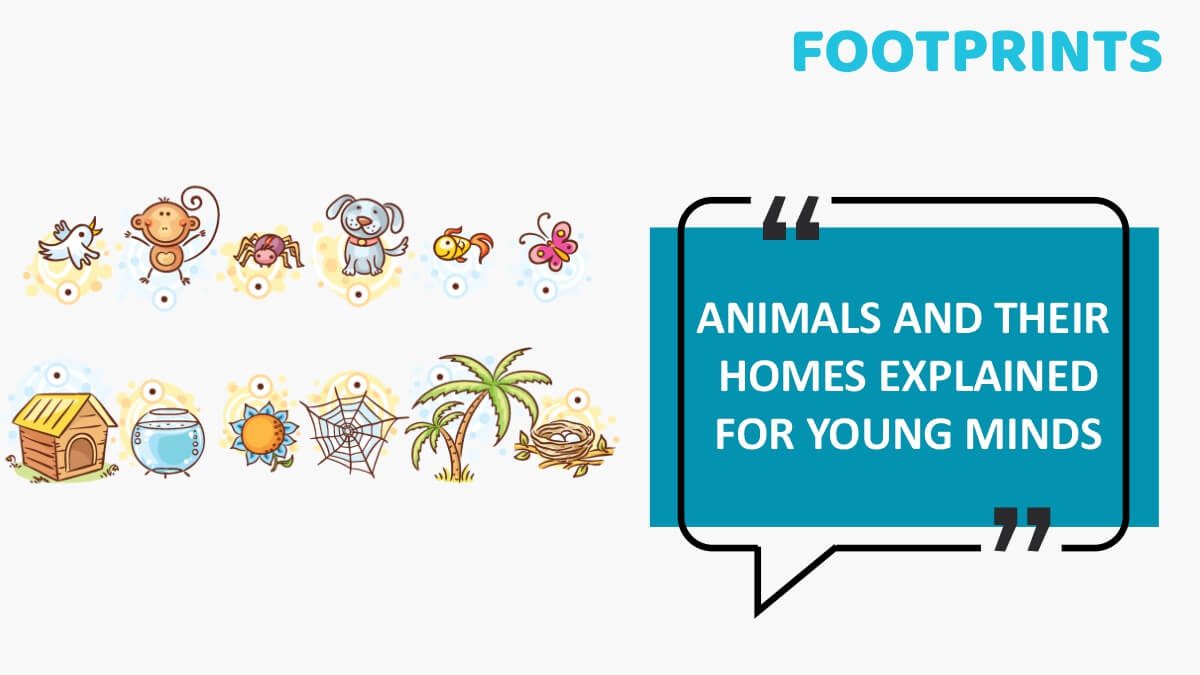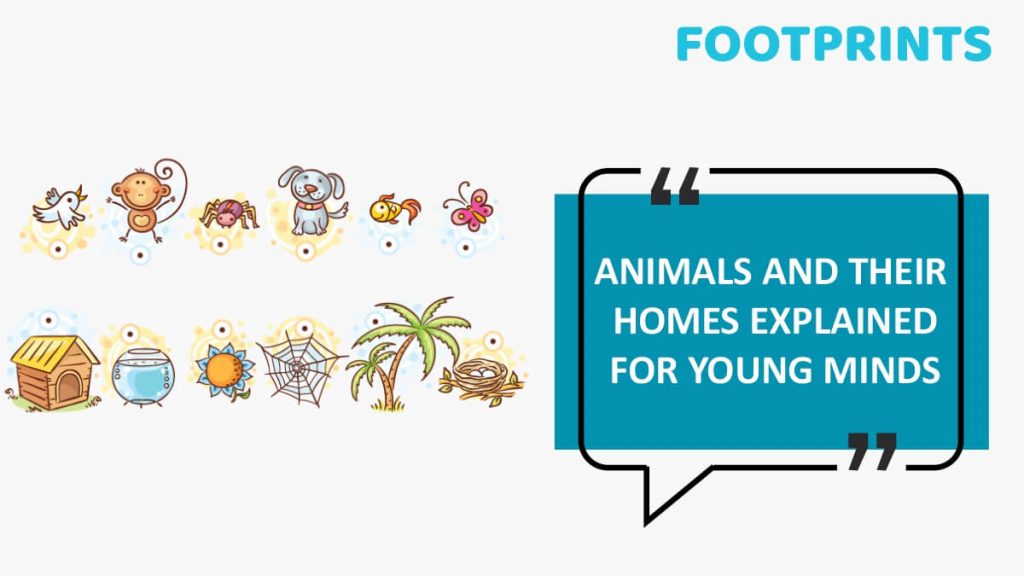
Step into the enchanting realm of animal habitats! Much like us, animals require secure and cozy shelters. Have you ever pondered over the appearance of their abodes? Within this blog post, we shall venture into the captivating variety of animal dwellings and discover how various species craft their one-of-a-kind homes. From subterranean burrows to canopy nests, from aquatic shells to astounding feats of engineering, the animal kingdom presents a vast array of architectural marvels. Prepare to set out on a voyage of exploration as we immerse ourselves in the mesmerizing universe of animal homes.
At Footprints, the preschool recognized as a beloved parenting partner, we prioritize the holistic development of children. In this article, we’re embarking on an exhilarating expedition into the realm of animals and their habitats. Were you aware that every animal possesses a distinct dwelling meticulously tailored to its requirements? Today, we’ll delve into the captivating residences of various animals, from the diminutive and concealed to the grand and majestic. Join us as we plunge into the enchanting universe of animal homes and uncover the remarkable methods through which they are constructed. By the conclusion of this blog post, you’ll develop a renewed appreciation for the diversity and ingenuity within the animal kingdom. So, equip your virtual binoculars, and let’s begin exploring the multifaceted abodes of these creatures!
Burrows and Dens: Underground Dwellings
Underground living offers safety and protection to certain animals. They excavate burrows and construct dens as defenses against predators and harsh weather conditions. Take rabbits, for instance; they’re the interior designers of the burrow world, crafting complex warrens with a flair for tunnels and chambers. These burrows serve as secure havens, providing shelter, warmth, and a nurturing environment for raising their offspring. Similarly, foxes dig dens to relax, hunt, and tend to their young. These subterranean abodes stand as remarkable demonstrations of resourcefulness and adaptability among these furry creatures.
Nests and Hives: Homes in the Trees
Many birds and insects build their homes high up in the trees. Birds construct nests using twigs, leaves, grass, and even bits of garbage they find. These nests provide a safe place for birds to lay eggs and raise their chicks. Some birds, like weaver birds, are famous for their intricate and beautifully woven nests. On the other hand, bees and wasps create hives using wax or paper-like materials made from chewed wood pulp. These hives serve not only as homes but also as places to store food and raise their young.
Caves and Crevices: Shelter in Rocky Hideouts
Rocky landscapes provide excellent hiding spots for animals seeking shelter. For example, bats roost in caves during the day and emerge at night to hunt for insects. These caves offer protection from predators and a stable environment for the bats to rest. Likewise, bears hibernate in caves during the winter months, taking advantage of the natural insulation provided by the rocky walls. The adaptability of animals in using natural formations as their homes is truly remarkable.
Holes and Hollows: Homes of Small Creatures
Small creatures like mice, squirrels, and insects often seek refuge in holes and hollows. They use pre-existing spaces like tree hollows, abandoned burrows, or even gaps in rocks or logs. These snug nooks offer a secure sanctuary for resting, hiding from predators, and raising their young. The ingenious utilization of these spaces showcases the resourcefulness and survival instincts of these diminutive creatures.
Mounds and Dams: Engineering Marvels of Animal Homes
Some animals go beyond basic dwellings and create architectural marvels. Termites, for example, construct enormous mounds that can reach several meters in height. These mounds serve as ventilation systems, temperature regulators, and even as a defense against intruders. On the other hand, Beavers build dams across streams and rivers to create ponds where they construct their lodges. These dams offer a secure home for beavers and play a crucial role in shaping their surrounding ecosystems.
Shells and Shelters: Homes in the Water
The aquatic world also boasts a variety of unique homes. Snails and hermit crabs carry their homes on their backs as shells. They seek out empty shells, often discarded by other animals, and make them their own by moving in and sealing the entrance with their bodies. This mobile housing gives them a secure home wherever they go, ensuring protection and stability. Additionally, fish, like the damselfish, create shelters by using coral reefs or empty shells as hiding places from predators.
The Art of Animal Architecture: Lessons from the Animal Kingdom
As we explore through the captivating abodes of the animal world, we’re irresistibly drawn to the awe-inspiring architectural prowess on display. From the exquisite avian nests to the structural genius of termites, animals serve as our educators in design and construction. By immersing ourselves in the intricacies of these animal sanctuaries, we unlock the door to innovative, secure, and eco-friendly living spaces for both our generation and those to come. Let’s revel in the marvels of the animal kingdom and extract inspiration from their astonishing architectural masterpieces.
Conclusion
Animals have mastered the art of building homes that cater to their specific needs and provide them with safety and security. From underground burrows to treetop nests, from water-bound shells to engineering marvels, the diversity of animal homes is genuinely awe-inspiring. By understanding these habitats, we can develop a deeper appreciation for the natural world and the incredible adaptations that animals have made. So, the next time you come across an animal home, take a moment to marvel at the ingenuity of nature’s architects.

Purvesh is a multidimensional leader at Footprints Childcare. As a TED speaker and IIT-Delhi alumnus, his passion for education is fueled by his experiences as a certified life coach and parent. He goes beyond traditional parent engagement activities, creating meaningful connections through insightful parenting workshops and open communication channels. Purvesh’s commitment to empowering parents, teachers, and students is the foundation of everything we do at Footprints. What motivates Purvesh? As a parent himself, the challenges his son faces in the educational system are the driving force for him.


